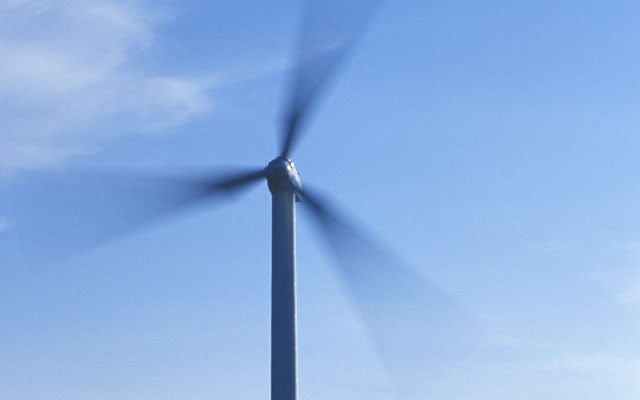Wind turbines produce power only when the wind is blowing. But perhaps more importantly, wind production builds only when the subsidies are flowing.
The wind industry is experiencing slow growth through the first half of the year and blaming uncertainty over a massive subsidy as a reason why. Alex Guillen of Politico reported last week that the United States added only 1.6 megawatts of wind power in the first half of 2013, which is far less than the 13 gigawatts installed last year and significantly smaller than the 3 gigawatts of new power installed over the first half of 2012.
The fact that the wind production experiences significant declines when the subsidy expires is not a good reason to extend it; in fact, it’s a good reason to permanently remove it.
The wind industry is confident that installation will pick up towards the end of year and that the uncertainty over the extension of the tax credit created the lag in production for the year. But what is most important, however, is just how dependent wind production is upon subsidies, as well as state mandates for renewable electricity generation.
Congress first passed the wind production tax credit (PTC) in 1992 but allowed it to expire several times. The PTC expired in 2000, 2002, and 2004, and annual wind installation decreased by 93 percent, 73 percent, and 77 percent, respectively. Wind energy advocates call this a boom-and-bust cycle created by unstable policy, but it is more likely a case of the wind PTC’s oversupplying a market and artificially propping up a large portion of wind production.
The complaint from wind advocates is that there’s no business certainty. While there may be uncertainty as to whether politicians cave and extend the PTC another year or two, the wind industry knew the expiration was coming for years. If they wanted policy certainty, they should have stopped lobbying for an extension.
Removing the energy subsidies would eradicate the near-term dependence but also promote long-term growth within the industry. The part of the wind industry that doesn’t depend on the PTC would be the more robust, competitive part and would provide consumers with affordable energy. Until the training wheels are taken off, however, the industry will not have the strongest incentive to innovate and lower costs to become economically viable and instead will concentrate efforts on lobbying for handouts.
Even Patrick Jenevein, CEO of the clean energy firm Tang Energy Group, affirmed in The Wall Street Journal the problems with his own industry’s dependence on subsidies:
Government subsidies to new wind farms have only made the industry less focused on reducing costs. In turn, the industry produces a product that isn’t as efficient or cheap as it might be if we focused less on working the political system and more on research and development.
The wind PTC is again set to expire at the end of the year. To provide certainty, save taxpayers billions of dollars, and promote healthy competition in the energy sector, Congress should let it expire and work to remove all energy subsidies for all sources.



























